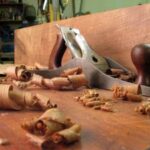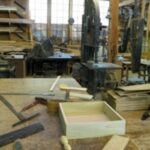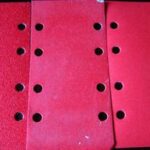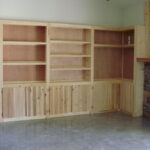These basic tools are most used while working with wood, no matter what the project is. It’s important to know what the tool is, when you need it, and what it is used for. Keep in mind that woodworking is more than a hobby, it’s also a skill. This means that you should take caution so you can safely accomplish your project. And it is always best to have full knowledge about every thing you do. The more you know about your tools the smaller the risks.
The best place to start is developing a plan. You can do this by ordering one, or searching the net for a freebies. There are also a few programs out there that will help you to create your own plan. Decide what you want your project to be, then create a step by step guide. Then choose the tools you are sure you will need.
Safety first, remember to use these while you are working. Goggles to protect your eyes. Gloves to protect your hands from splinters, stray nails, and nicks. An apron that is intended for woodworking, to protect your clothes from getting ripped, and flying wood chips. Face mask to keep from inhaling sawdust.
Workbench – Most woodworkers overlook this particular tool, but it is actually very necessary. Whether you are building your own or purchasing one for your workshop, the bench will turn out to be one of the most useful items while working. And a good idea to join this would be tool cabinets and drawers. Add these onto your work table, or below it, to keep your tools off the top, allowing you to have plenty of space to work.
Planer – With several types available, as well as electric or handheld. You will want to choose the right one (or ones) best for your project. Planing your wood will get it to the right thickness you need. Also use this to clean up rough surfaces, the wood should be smooth and clean.
Saws – Also several types to choose from, including electric and handheld. The type of saw you need all depends on how big the wood is and on the project you are doing.
-Table saw, most common in woodworking. Many uses.
-Scroll saw, small saw used to cut intricate curves with edges.
-Jigsaw, used for cutting arbitrary, artistic curves, such as stencils or custom shapes.
-Circular saw, handheld and requires some practice. A quick saw that can handle a lot of projects.
-Chainsaw or handsaw, best used for cutting through thick wood (like a tree trunk).
Handheld metal detector – If working with scrap wood, you will use this to detect nails or staples that may be broken off within the wood. This item is needed to save your saw blade from cutting into broken nails that can’t be seen on top of the wood. Using this item will save your blade from being destroyed, warped, or damaging your project.
Power sander or sandpaper – To finish your project, you will need to sand it. The choices are between a power sander or sanding it by hand. Then you will need to decide what type of sandpaper and the size of grit. The lower the grit number, the more coarse, using the wrong grit could cause damage to the wood. Choosing will all depend on the project.
Chalk line – This tool is used for making long straight lines along the face of the wood. Also can be used is a pencil with rulers or tape measures, but using the chalk line is known to be more accurate at measuring straight lines.
Tape Measure – The size of the tape measure depends on your project, but it is recommended to use at least a 50′ tape measure. That way you have plenty of length on hand for any project.
Power drill and drill bits – Cordless or electric. This tool comes in handy when you have to screw wood together, or make holes to insert tabs. Use the drill bits to get the right size hole that is needed. You could also use hammer and nails, as well as bolts and nuts, or glue and clamps for those simple projects.
Level – Available in many sizes. Leveling your wood before the project will tell you if the wood is warped, which will play a big part in your finished project. And using the level through out the project will help you make a more accurate shelf, cabinet, wall, frame, or anything you are making that will need to be straight. If joining two pieces together and not leveling first, could cause these them to be crooked and may have to be taken apart and be pieced together again.
Clamps – Used for any project that requires glue. A variety of clamps are available to suit any size or type of wood you are working with. C -clamps, quick grip clamps, short bar, stacking clamp, 4 way, picture frame, and even vacuum pressure. Research on clamps may be necessary to find the right clamp for each individual project you do.
There is a long list of tools that are used on a regular basis of woodworking. Although I have not covered everything, I have mentioned the basics that could help out any beginner looking for more information on the tools they need to get started. And the price of each tool always depends on electric or handheld, year of make, and brand names. ALL the tools here can be found at your local hardware store.





